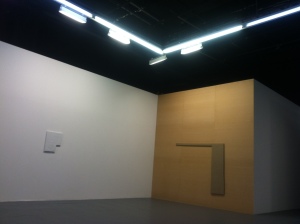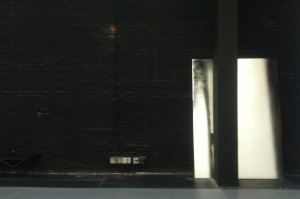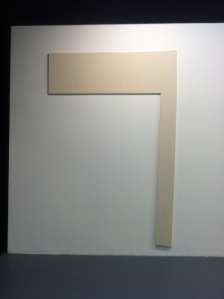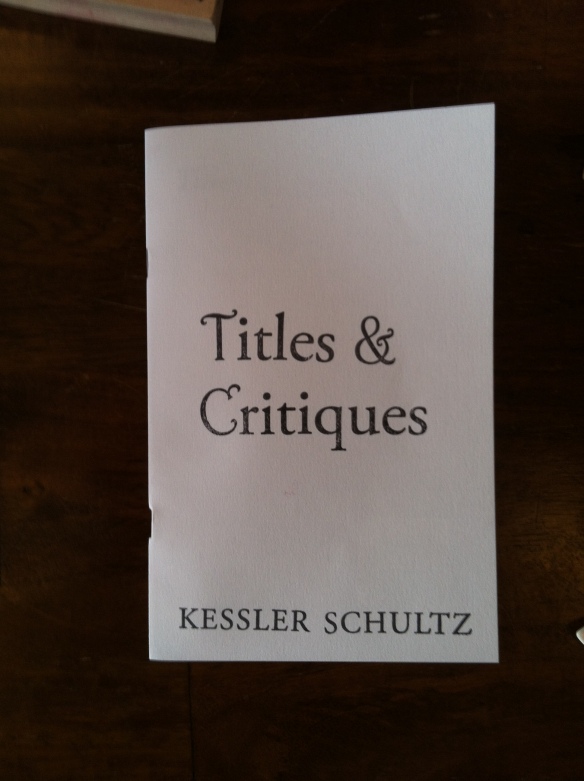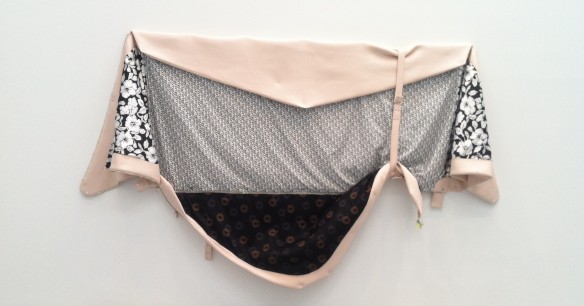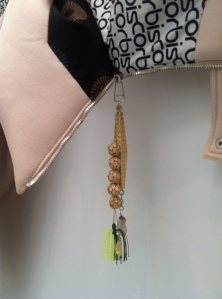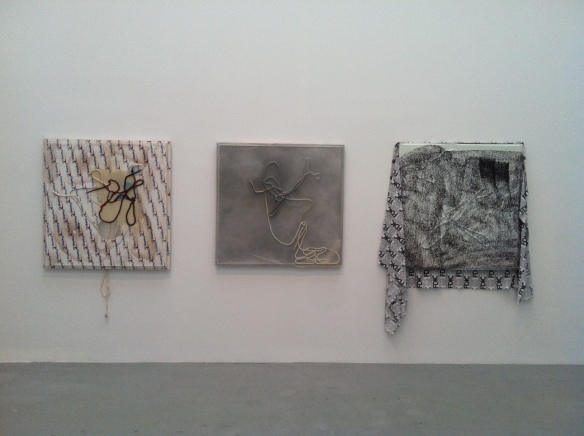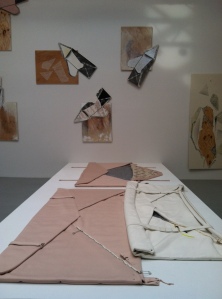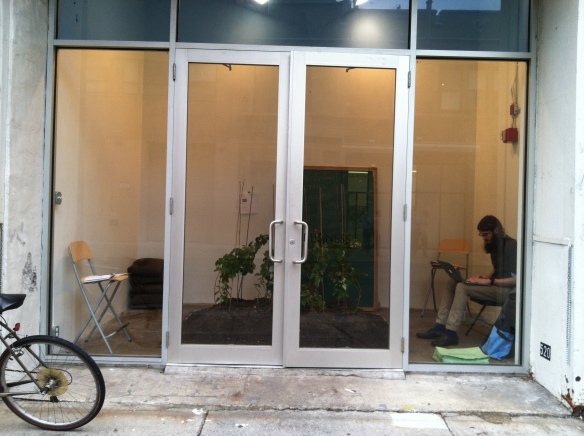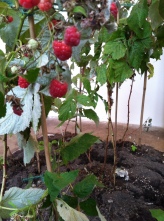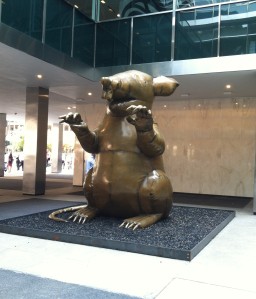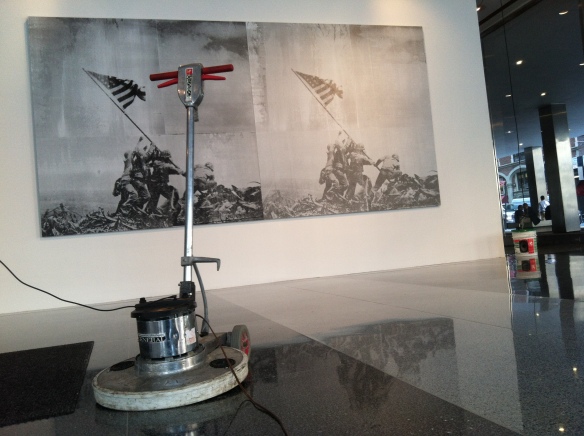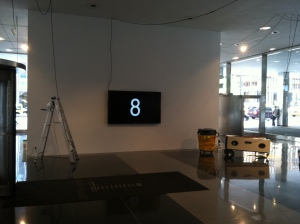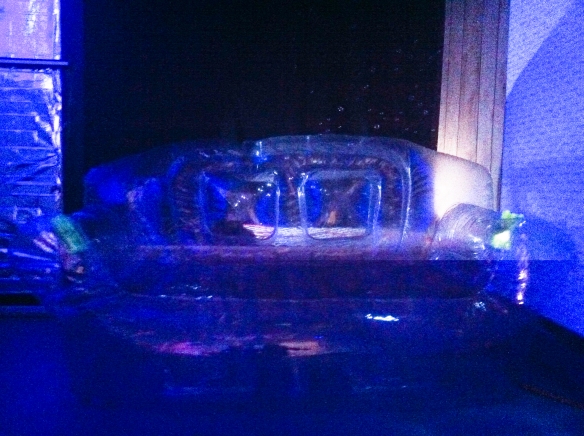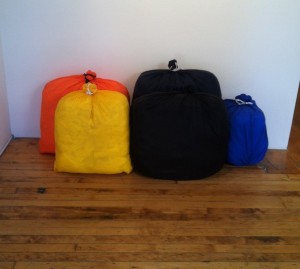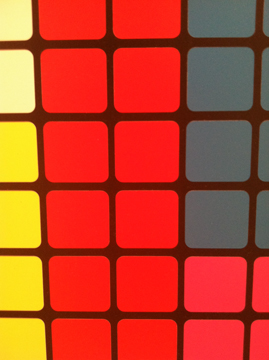Jacob Kassay @ The Kitchen
The room is quiet in the sleepy daytime manner of an old building. Above my head tubes of florescent light hum like a bank of bug zappers while square panels in the grey-blue floor creak under foot. Eight paintings by Jacob Kassay hang on the walls and a ninth is placed somewhat precariously on the floor, angled between a black brick wall and a thick structural pillar. I survey from a central spot, spinning like a second hand (only slower and with less regularity) in a clockwise direction.
The paintings on the walls have irregular shapes with uneven corners and edges that seem slightly askew. They look awkward, lopsided, formally arbitrary; their principle technical achievement perhaps being the fabrication of the wooden support the canvases are stretched upon. That would mean these are paintings whose major distinction is essentially sculptural. Sounds odd, but seems true. The structure of these pieces is further accentuated by the plainness their surfaces, which are raw and bare and leave little for the eye to catch on but creases and surface lint. They are not sexy things; for me they are as easy to look away from as Kassay’s silver plated canvases are to stare upon.
As I approach the metallic rectangle in the corner I’m wondering why the work with what is obviously the most attractive surface in the show is placed in such a way as to downplay its flat illustrious beauty? Placement is clearly critical so I squat to look at the shadowy space between the canvas and the wall. This is the shiny thing’s dark side, a little wedge of emptiness to look through. Perhaps in this setup the surface is a decoy, because what you see when you aren’t distracted by it is how the object rests in its place. The painting leans at a precise angle because that’s the angle given when an object of this size fits in that space. Perhaps this piece isn’t about painting at all, but about the relationship of an art object to the architecture of a building–and if that’s so, then maybe the artist’s thinking is more classical than one might first imagine? In any case I decide I’ve come into physical harmony with the piece when I’ve gotten into comfortable lean against the pillar, facing my blurry self head on.
I’m jotting notes as I exit into a different stairwell than the one I came up. It’s quite. Someone suddenly yells “watch out!” as I nearly knock into another silver-plated painting propped inconspicuously on the landing. Heart thudding, I walk half a flight up and sit down. Art & Architecture I think to myself. You can’t see the work without looking at the red and orange walls in this stairwell. It’s submersed in the space, and when I squint it’s totally edgeless.
Back down in the lobby I notice three more silver paintings nonchalantly leaning here and there. It is amongst the most casual displays I’ve ever seen, so casual in fact that it almost renders the works invisible. I anthropomorphize them and imagine they left the gallery on a cigarette break. It makes me smile. I ask the attendant how many people loiter in this passageway admiring the artwork. Hardly any, he responds, most people don’t notice it.
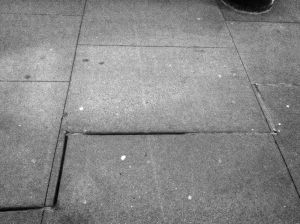 Gazing down at my boots as I make my way north along 10th street I see something that gives me another angle on Kassay’s oddly shaped canvases. They resemble certain sections of sidewalk that deviate from the standard square. Futhermore, Kassay’s decision to leave his canvases unprimed and raw puts their textures and general monotones in step with these sidewalk deviations. I wonder then, might they be considered as examples of realism?
Gazing down at my boots as I make my way north along 10th street I see something that gives me another angle on Kassay’s oddly shaped canvases. They resemble certain sections of sidewalk that deviate from the standard square. Futhermore, Kassay’s decision to leave his canvases unprimed and raw puts their textures and general monotones in step with these sidewalk deviations. I wonder then, might they be considered as examples of realism?
